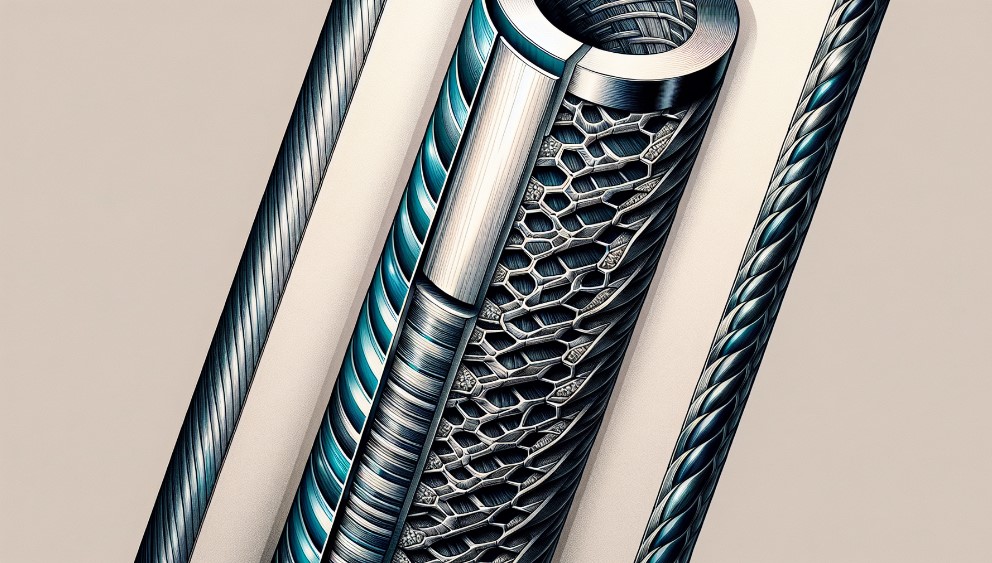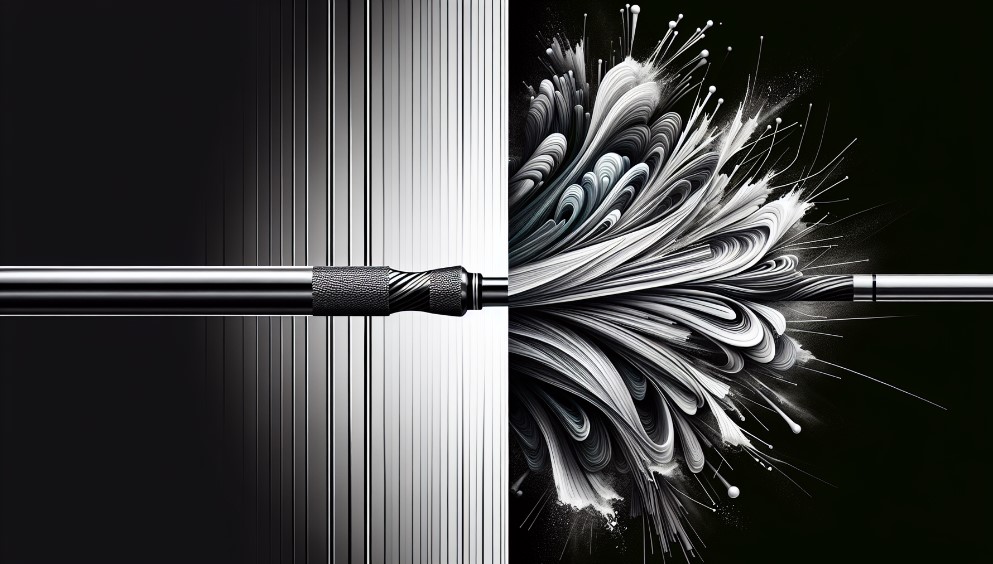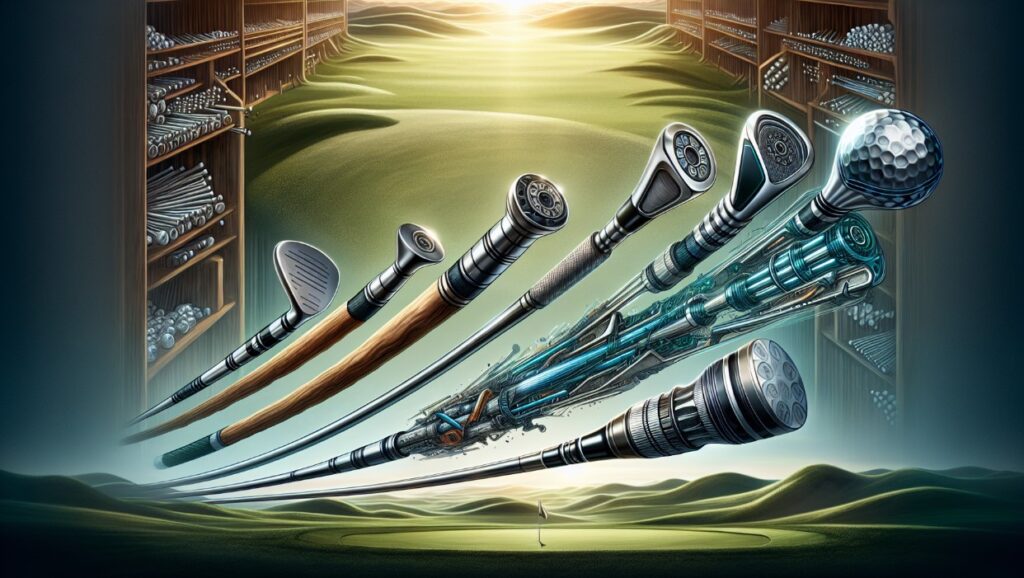Steel vs Graphite Shaft: Choosing the Best Option for Your Golf Game
Are you debating whether to choose a steel or graphite shaft for your golf clubs? The right shaft can impact your performance, with steel offering precision and longevity, while graphite lends itself to increased swing speed and a gentler feel on impact. This article delves into the critical differences between steel and graphite shafts, helping you tailor your choice to your playing style. In this “steel vs graphite shaft” comparison, we’ll guide you through the key factors to consider when making your decision.
Related article: Best Golf Irons
Key Takeaways: Steel vs Graphite
- Golf shafts are made of either steel, known for its durability and precision, or graphite, recognized for being lighter, providing increased swing speed and dampened vibrations, beneficial for golfers with slower swings or those who prefer a smoother impact feel.
- The flexibility and weight of graphite shafts can aid in achieving higher clubhead speeds and ball flight trajectories, making them suitable for players with slower swing speeds or those who suffer from wrist or elbow issues and seek reduced strain.
- Choosing the right shaft material often depends on the golfer’s skill level, playing style, and the specific clubs used; steel shafts are typically preferred for irons and wedges for better control while graphite shafts are favored for drivers for longer distances.
Understanding the Core of Golf Shafts: Steel and Graphite

Golf shafts are typically made from either carbon steel shafts, occasionally stainless steel, or layers of carbon fibre and resin materials, known as graphite shafts. Steel shafts are celebrated for their durability and resistance to wear and tear, making them less likely to break or become damaged compared to their graphite counterparts. This makes steel shafts a reliable choice for many golfers, especially if you are looking for a budget-friendly option.
On the other hand, graphite shafts are more expensive but provide unique benefits of their own. They are:
- Lighter, which can influence your swing speed
- Their construction results in different vibrational properties
- Graphite shafts tend to transmit fewer vibrations to your hands, providing a different kind of feedback and energy transfer than steel shafts
So if you’re looking for lighter shafts with different feedback, graphite might be the way to go.
The Dynamics of Swing Speed: How Shaft Material Impacts Your Game
The material of your golf shaft can significantly impact your swing speed, a critical factor in your golf game. Graphite shafts, being lighter than steel shafts, can influence your swing speed, potentially giving you an edge in the game.
The Role of Shaft Flex
Shaft flex plays a crucial role in golf performance. Graphite shafts are typically more flexible than steel shafts, which can affect the speed and accuracy of your swing. Your swing speed is a crucial factor when determining the appropriate shaft flex for you. If your swing is slower, a more flexible shaft, like graphite, might be a better choice.
Moreover, a golfer’s swing tempo affects the shaft load and is vital in choosing the correct shaft flex. Graphite shafts can be designed to influence the launch angle by adjusting the kick point, offering versatility to different types of golfers. Thus, the flexibility of graphite shafts can be an advantage to many golfers, especially those with slower swing speeds.
Related article: Stiff vs Regular Flex
The Impact of Weight
The weight of the shaft also plays a significant role in your golf performance. Some factors to consider are:
- Graphite shafts are typically lighter than steel shafts, making them a popular choice for many golfers.
- Some players still prefer the weight and feel of steel shafts. This extra weight can provide better control and stability, especially for golfers with faster swing speeds.
- However, for golfers with slower swing speeds, the lighter and more flexible graphite shafts might prove to be beneficial, potentially leading to greater driving distance.
The weight of the shaft also influences the synchronization of your swing and club, affecting your balance, posture, and shot consistency. Furthermore, the reduced weight of a graphite shaft can minimize fatigue during long rounds or practice sessions, enabling you to maintain consistency and performance throughout your game.
Precision vs Power: A Comparative Look at Steel and Graphite Shafts

When choosing between steel and graphite shafts, one must consider the trade-off between precision and power. Steel shafts are chosen for their rigidity, which leads to enhanced precision during a golf swing. The solid feel and stability of steel shafts contribute to greater accuracy.
On the other hand, graphite shafts are designed to aid in achieving higher ball flight, which can translate into more power behind each shot.
Ball Flight Trajectory
The flexibility of graphite shafts contributes to increased clubhead speed, which in turn results in higher ball flight trajectories. The higher ball flight offered by graphite shafts is due to their ability to promote a higher launch angle and potential for greater distance.
Steel shafts provide more control and accuracy, translating to a lower ball flight trajectory which is especially beneficial in windy conditions. Thus, your choice between steel and graphite shafts should account for your shot trajectory preferences, with graphite shafts typically yielding higher flights and steel shafts facilitating a lower trajectory.
Vibration Dampening Properties
One key difference between steel and graphite shafts is their vibration dampening properties. Graphite shafts dampen vibrations more effectively than steel shafts, contributing to a smoother impact feel for the golfer. Although steel shafts can be fitted with vibration dampening inserts, they inherently transmit more vibration than graphite shafts.
These vibration dampening properties of graphite shafts are especially beneficial for players with wrist or elbow issues, reducing strain on these areas during play. Golfers may experience reduced fatigue and a smoother feel upon impact when using graphite shafts due to their superior vibration dampening properties.
Tailoring to Player Style: When to Play Steel or Graphite
Choosing between steel and graphite shafts often comes down to the golfer’s playing style and skill level. Your playing style influences the feel and control you have over your clubs, which is a critical factor in choosing between steel and graphite shafts.
Factors Influencing Shaft Selection
Several factors influence the choice between steel and graphite shafts. Graphite shafts, due to their light weight, can aid senior and female golfers in achieving higher clubhead speeds, making them a considerable option for these players. On the other hand, golfers who value sensory feedback and the ability to fine-tune their swing might prefer steel shafts for the distinct feel they provide at shot impact.
Your skill level also impacts the shaft selection. Golfers with higher skill levels may prefer the consistent performance of steel shafts, while beginners may benefit from the lighter weight and increased clubhead speed of graphite shafts. Your individual play style and comfort with different shaft types will influence your selection.
Club-Specific Shaft Recommendations
The choice between steel and graphite shafts can also depend on the specific golf club in question. Some clubs may benefit more from the properties of graphite shafts, while others may perform better with steel shafts.
Irons and Control
When it comes to irons and wedges, steel iron shafts are often the recommended choice. Steel shafts in irons are favored by professional golfers and low-handicap players due to the improved control and accuracy they provide. They also offer consistent ball flight and distance control.
Furthermore, steel shafts in wedges are favored for their increased control on shots, which is essential for accurate play. The stability and feedback provided by a steel shaft in wedges enhance a golfer’s control over delicate shots and full swings.
Drivers and Distance
In contrast, when it comes to drivers, graphite shafts often have the edge. Graphite shafts in drivers contribute to faster swing speeds and longer distances off the tee. The increased clubhead speed and distance are due to the lighter weight of graphite shafts in comparison to steel.
For increased distance off the tee, selecting a graphite shaft for a driver with a lighter weight and more flexibility than a fairway wood shaft can be advantageous. So, if distance is what you’re chasing, a graphite shaft in your driver might be the way to go, while fairway woods can provide more control and accuracy.
Related article: Best Golf Drivers
Equipment Evolution: The Latest Trends in Shaft Technology

As in any sport, golf equipment has evolved over time, leading to lighter, stronger, and more forgiving golf clubs. New materials and engineering techniques have resulted in significant changes in golf shaft design.
PGA Tour Insights
Even PGA Tour pros have preferences when it comes to golf shaft materials. They often favor:
- Steel shafts in their irons for the control and consistency they provide under tournament conditions
- Graphite shafts in their drivers to maximize distance
- Some still prefer steel for precision.
Differences in shot shaping and course conditions can influence a PGA Tour player’s choice between steel or graphite shafts. There is also a noticeable trend among PGA Tour players towards multi-material shafts that offer a balance of the benefits that steel and graphite provide.
Summary
The choice between steel and graphite shafts is not a one-size-fits-all situation. It depends on a variety of factors, including your swing speed, skill level, physical condition, and personal preferences. It’s essential to consider all these aspects to select the shaft material that best suits your game. Ultimately, the best way to decide is to try out both types of shafts and see which one feels right for you.
Frequently Asked Questions
What are the main differences between steel and graphite golf shafts?
Steel shafts offer more precision and control due to their weight and durability, while graphite shafts are lighter, more flexible, and can help increase swing speed and distance.
Which shaft material is better for beginners?
Graphite shafts may be better for beginners due to their lighter weight and increased clubhead speed, but the best choice depends on factors such as swing speed, physical condition, and personal preferences.
Why do professional golfers often prefer steel shafts in irons and wedges?
Professional golfers often prefer steel shafts in irons and wedges because they offer more control and accuracy, which are crucial for making precise shots. Additionally, steel shafts provide consistent ball flight and distance control.
Why are graphite shafts often recommended for drivers?
Graphite shafts are often recommended for drivers because they are lighter and more flexible, leading to increased swing speeds and longer distances off the tee. This makes them an excellent choice for this club.
What are the latest trends in golf shaft technology?
The latest trends in golf shaft technology involve the use of new materials and engineering techniques to create lighter, stronger, and more forgiving clubs, as well as a shift towards multi-material shafts combining the benefits of steel and graphite. This allows for improved performance and feel while playing.
